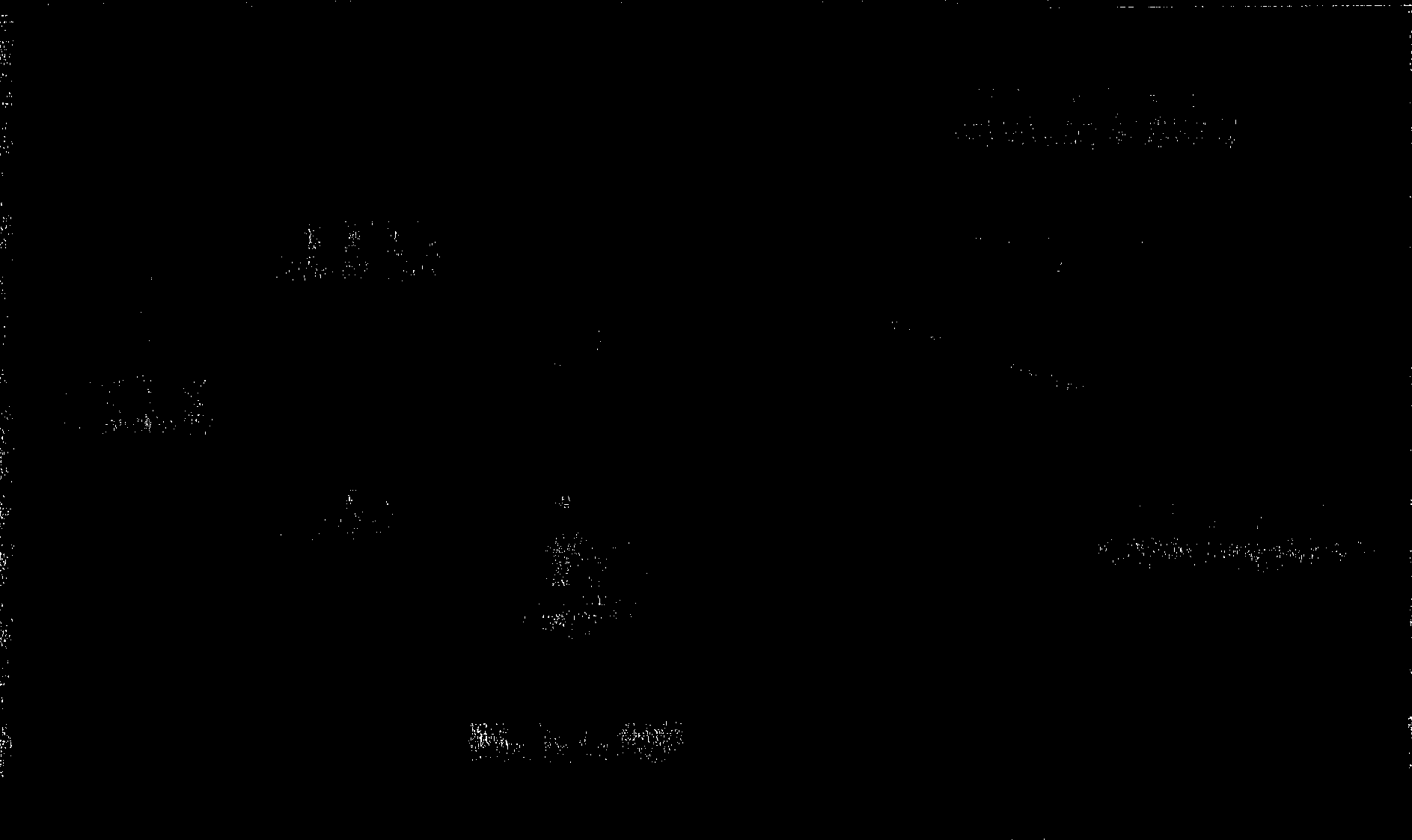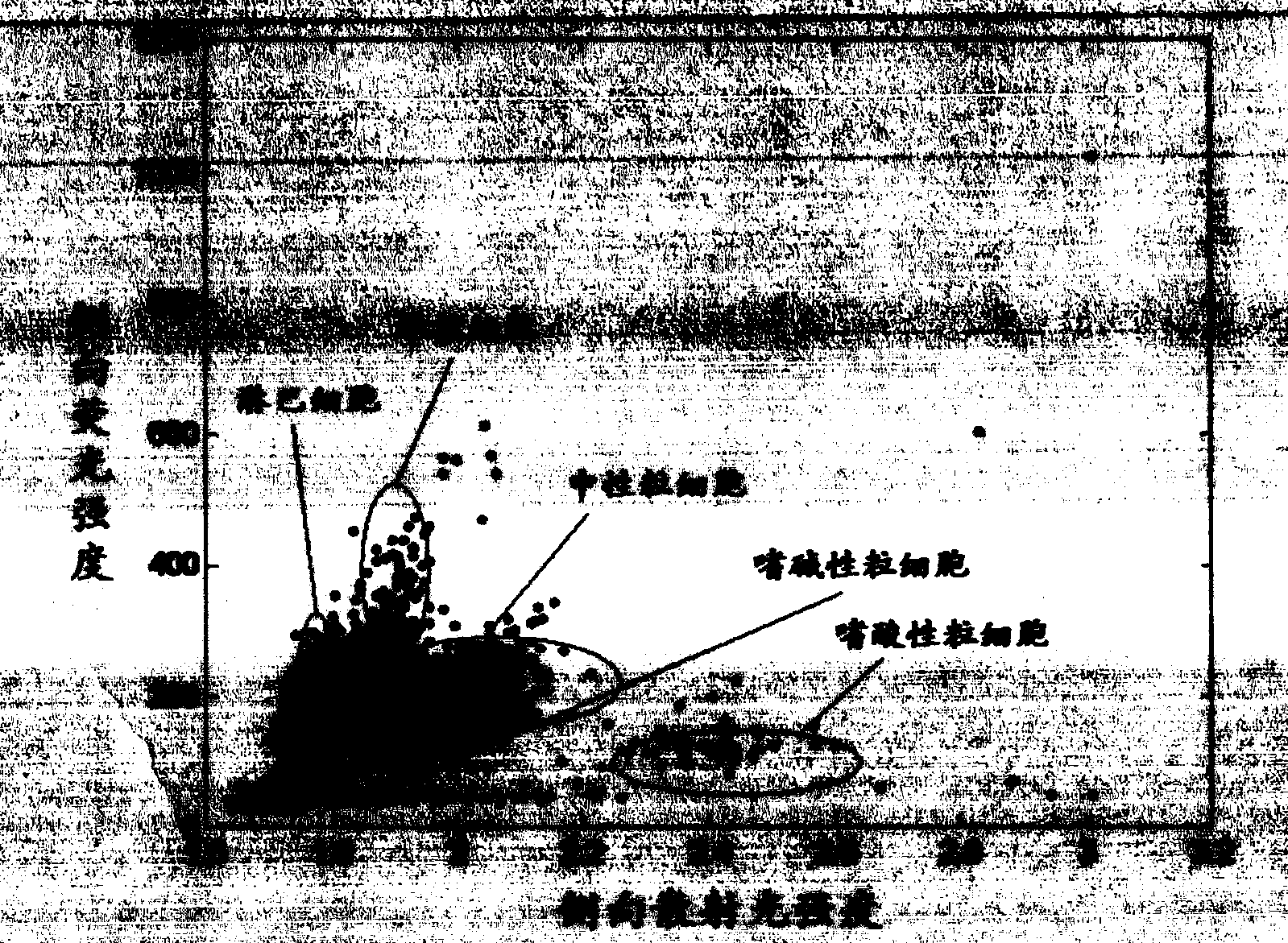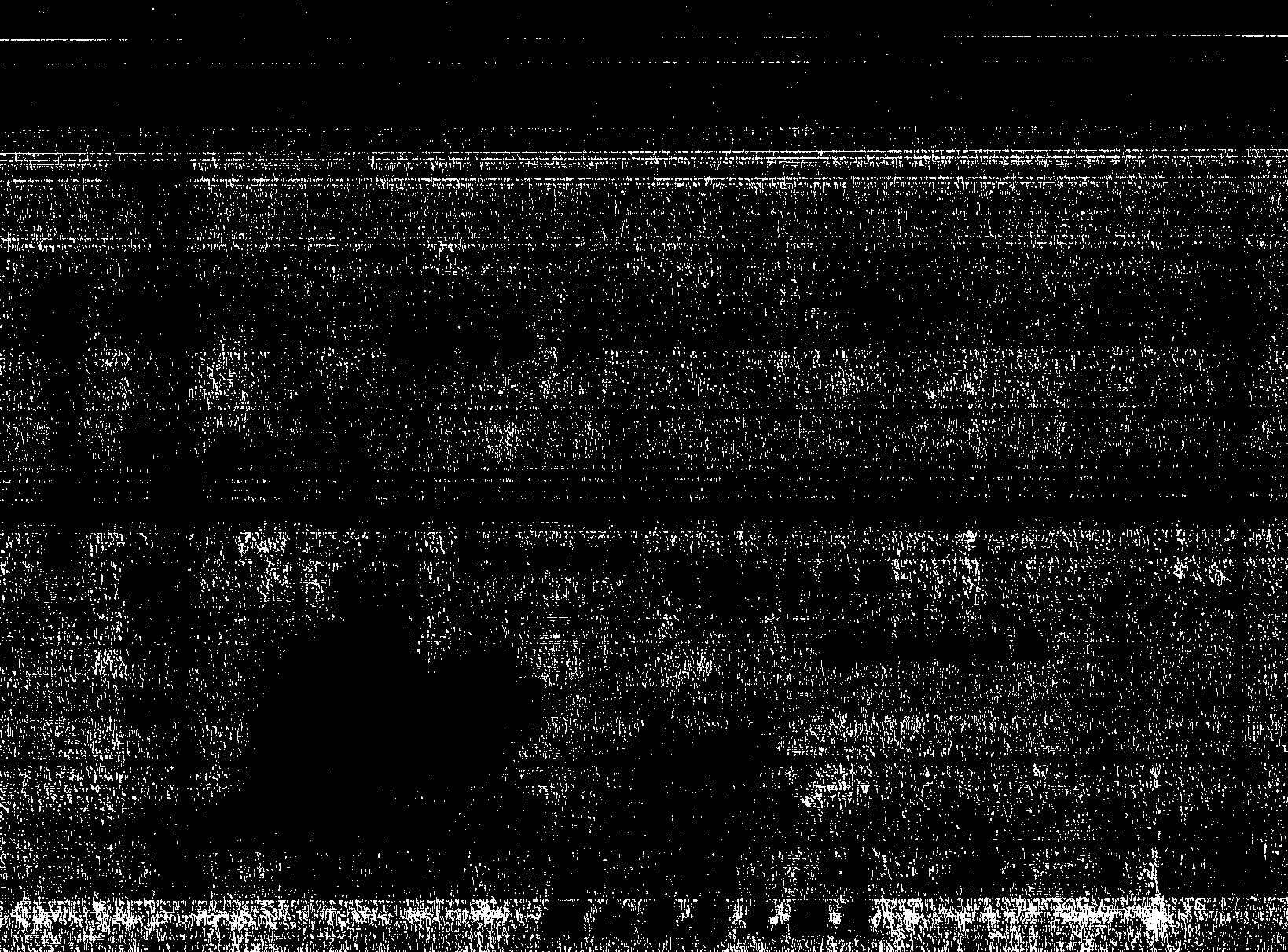Leukocyte classification kit and classification method thereof
A white blood cell classification and white blood cell technology, applied in biological testing, material stimulation analysis, material inspection products, etc., can solve the problems of low quantum yield, increased detection cost, easy photobleaching, etc., achieve low reagent consumption and reduce detection cost Effect
- Summary
- Abstract
- Description
- Claims
- Application Information
AI Technical Summary
Problems solved by technology
Method used
Image
Examples
Embodiment 1
[0046] Embodiment 1 water-soluble CdTe quantum dot-cyanine dye probe
[0047] (1) Preparation of glutathione-stabilized water-soluble CdTe quantum dots
[0048] a. Preparation of NaHTe solution
[0049] Install a 50mL clean three-neck flask on a magnetic heating stirrer, add 0.09g Te powder and 0.06g NaBH4 into it under nitrogen protection, keep the temperature at 75°C, and inject 3mL of boiled and cooled double distilled water. React for 10 minutes, until the black powder disappears, the solution turns into purple-red NaHTe solution, which is marked as A solution.
[0050] b. Preparation of glutathione-stabilized water-soluble quantum dots
[0051] Under nitrogen protection conditions, add 100mL 1.0mmol / L Cd to a clean 200mL three-neck flask 2+ solution and 0.1mmol / L glutathione (GSH) solution, adjust the pH to 10 with 1mol / L NaOH solution, then add 300uL of solution A, heat and reflux for 100min, and prepare glutathione-stabilized CdTe (CdTe-GSH) quantum dots.
[0052...
Embodiment 2
[0056] Embodiment 2 prepares leukocyte classification reagent (A)
[0057] Prepare a white blood cell differential reagent containing the following substances for testing.
[0058]
[0059] Add 10uL of EDTA.2K anticoagulated blood to 1mL of white blood cell classification assay reagent, then add 3uL of 0.2ppm water-soluble CdTe quantum dot-cyanine dye probe to prepare a test sample, and inhale the appropriately modified flow cytometry analysis The instrument uses the side fluorescence with a measurement angle of 90 degrees to measure the fluorescence intensity information of the cells, and uses the side scattered light with a measurement angle of 90 degrees to measure the side scattered light intensity information of the cells. The results are as follows figure 2 As shown, white blood cells are divided into five types: lymphocytes, monocytes, neutrophils, basophils and eosinophils.
Embodiment 3
[0060] Embodiment 3 prepares leukocyte classification reagent (B)
[0061] Prepare a white blood cell differential reagent containing the following substances for testing.
[0062]
[0063]
[0064] Add 10uL of EDTA.2K anticoagulated blood to 1mL of white blood cell classification reagent, then add 3uL of 0.3ppm probe water-soluble ZnTe quantum dot-cyanine dye probe to prepare the test sample, and inhale the properly modified flow The cell analyzer uses side fluorescence at a measuring angle of 90 degrees to measure the fluorescence intensity information of cells, and uses side scattered light at a measuring angle of 90 degrees to measure the side scattered light intensity information of cells. The results are as follows image 3 As shown, white blood cells are divided into five types: lymphocytes, monocytes, neutrophils, basophils and eosinophils.
PUM
 Login to View More
Login to View More Abstract
Description
Claims
Application Information
 Login to View More
Login to View More - R&D
- Intellectual Property
- Life Sciences
- Materials
- Tech Scout
- Unparalleled Data Quality
- Higher Quality Content
- 60% Fewer Hallucinations
Browse by: Latest US Patents, China's latest patents, Technical Efficacy Thesaurus, Application Domain, Technology Topic, Popular Technical Reports.
© 2025 PatSnap. All rights reserved.Legal|Privacy policy|Modern Slavery Act Transparency Statement|Sitemap|About US| Contact US: help@patsnap.com



